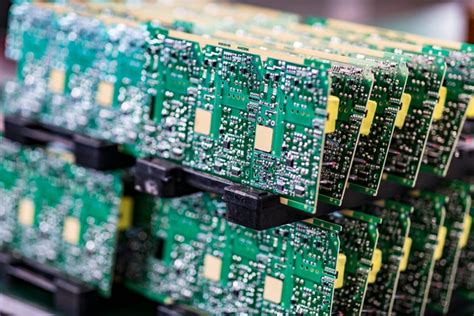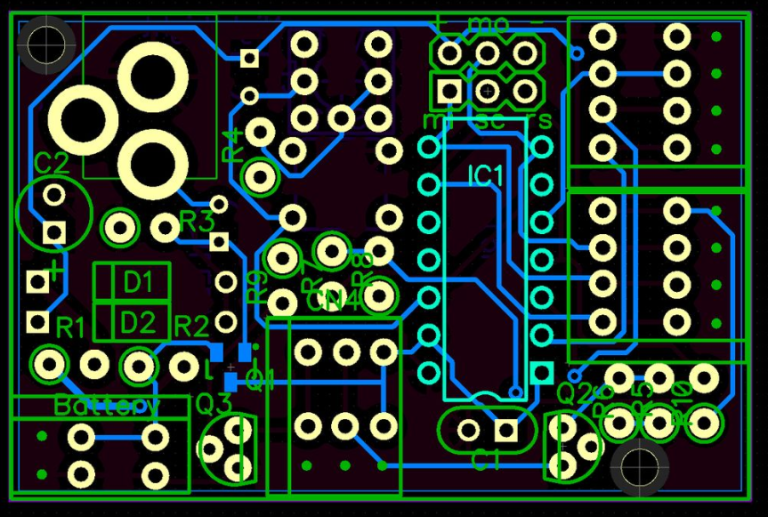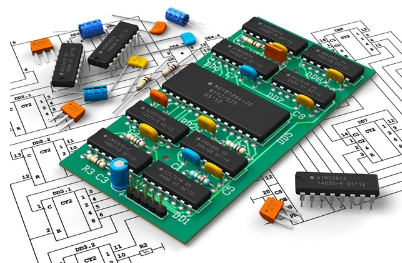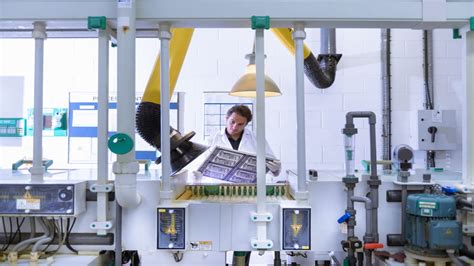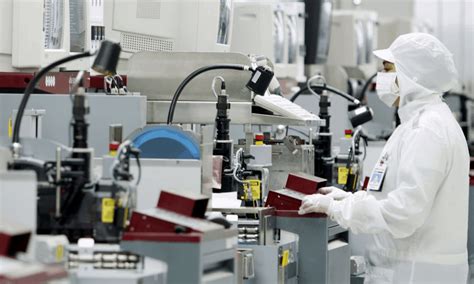Ceramic pcb europe
Advantages Of Ceramic PCBs In European Electronics Manufacturing
Ceramic printed circuit boards (PCBs) have emerged as a pivotal component in the European electronics manufacturing sector, offering a range of advantages that are increasingly being recognized by industry leaders. As the demand for high-performance electronic devices continues to grow, the unique properties of ceramic PCBs make them an attractive choice for manufacturers seeking to enhance the reliability and efficiency of their products.
One of the primary advantages of ceramic PCBs is their exceptional thermal conductivity.
Unlike traditional materials such as FR-4, ceramics can efficiently dissipate heat, which is crucial for high-power applications. This characteristic is particularly beneficial in sectors such as automotive and aerospace, where electronic components are often subjected to extreme temperatures. By effectively managing heat, ceramic PCBs help prevent overheating, thereby extending the lifespan of electronic devices and reducing the risk of failure. This thermal management capability is a significant factor driving their adoption in Europe, where stringent regulations and high standards for product reliability are prevalent.
In addition to thermal performance, ceramic PCBs offer superior mechanical strength and durability.
The inherent robustness of ceramic materials makes these PCBs resistant to physical stress and environmental factors such as moisture and chemical exposure. This durability is especially advantageous in industrial applications, where electronic components may be exposed to harsh conditions. European manufacturers, known for their emphasis on quality and durability, find ceramic PCBs to be a fitting choice for products that must withstand rigorous operational demands.
Moreover, ceramic PCBs provide excellent electrical insulation, which is essential for maintaining signal integrity in complex electronic systems.
The high dielectric strength of ceramics ensures minimal signal loss and interference, which is critical in applications requiring precise and reliable data transmission. This property is particularly relevant in the telecommunications and medical device industries, where the accuracy and reliability of electronic signals are paramount. As Europe continues to lead in these sectors, the adoption of ceramic PCBs is likely to increase, driven by the need for high-performance and reliable electronic solutions.
Furthermore, the miniaturization of electronic components is a trend that continues to shape the industry, and ceramic PCBs are well-suited to meet this demand.
Their ability to support high-density interconnections allows for the design of compact and lightweight devices without compromising performance. This is particularly important in consumer electronics, where there is a constant push for smaller, more efficient products. European manufacturers, keen to remain competitive in the global market, are increasingly turning to ceramic PCBs to achieve these design goals.
In conclusion, the advantages of ceramic PCBs in European electronics manufacturing are manifold. Their superior thermal management, mechanical strength, electrical insulation, and support for miniaturization make them an ideal choice for a wide range of applications. As the industry continues to evolve, the demand for high-performance, reliable, and efficient electronic components will only grow. Consequently, ceramic PCBs are poised to play an increasingly important role in meeting these demands, solidifying their position as a key component in the future of European electronics manufacturing.

Innovations In Ceramic PCB Technology Across Europe
Ceramic printed circuit boards (PCBs) have emerged as a pivotal innovation in the electronics industry, particularly across Europe, where technological advancements are rapidly evolving. These PCBs are distinguished by their use of ceramic materials, such as alumina, aluminum nitride, and beryllium oxide, which offer superior thermal conductivity, mechanical strength, and electrical insulation compared to traditional fiberglass-based PCBs. As Europe continues to position itself at the forefront of technological innovation, the development and application of ceramic PCBs have become increasingly significant.
One of the primary drivers of ceramic PCB innovation in Europe is the burgeoning demand for high-performance electronic devices.
Industries such as aerospace, automotive, and telecommunications require components that can withstand extreme conditions, including high temperatures and mechanical stress. Ceramic PCBs are particularly well-suited for these applications due to their ability to dissipate heat efficiently, thereby enhancing the reliability and longevity of electronic devices. This capability is crucial in sectors like automotive, where electronic components are exposed to harsh environments and must maintain optimal performance.
Moreover, the European Union’s commitment to sustainability and energy efficiency has further propelled the adoption of ceramic PCBs.
These boards contribute to the development of energy-efficient devices by minimizing energy loss through improved thermal management. As a result, European manufacturers are increasingly integrating ceramic PCBs into their products to meet stringent environmental regulations and reduce their carbon footprint. This trend aligns with the broader European agenda of promoting green technologies and sustainable practices across various industries.
In addition to their thermal and environmental benefits, ceramic PCBs offer significant advantages in terms of miniaturization and integration.
The high-density interconnect (HDI) capabilities of ceramic materials allow for the creation of compact and lightweight electronic devices without compromising performance. This is particularly relevant in the context of the Internet of Things (IoT) and wearable technology, where space and weight constraints are critical considerations. European companies are leveraging these properties to develop innovative solutions that cater to the growing demand for smart and connected devices.
Furthermore, the European market for ceramic PCBs is characterized by a strong emphasis on research and development.
Numerous collaborations between academic institutions, research centers, and industry players are fostering innovation in this field. These partnerships are focused on exploring new ceramic materials, improving manufacturing processes, and enhancing the performance characteristics of ceramic PCBs. Such collaborative efforts are instrumental in maintaining Europe’s competitive edge in the global electronics market.
Despite the numerous advantages of ceramic PCBs, challenges remain in terms of cost and manufacturing complexity.
The production of ceramic PCBs involves sophisticated techniques such as laser drilling and metallization, which can be more expensive than traditional PCB manufacturing processes. However, ongoing research and technological advancements are gradually addressing these challenges, making ceramic PCBs more accessible and cost-effective for a wider range of applications.
In conclusion, the landscape of ceramic PCB technology in Europe is marked by significant innovation and growth.
Driven by the need for high-performance, energy-efficient, and miniaturized electronic devices, European industries are increasingly adopting ceramic PCBs. Through continued research and collaboration, Europe is poised to lead the way in advancing ceramic PCB technology, thereby contributing to the development of cutting-edge electronic solutions that meet the demands of a rapidly evolving global market.
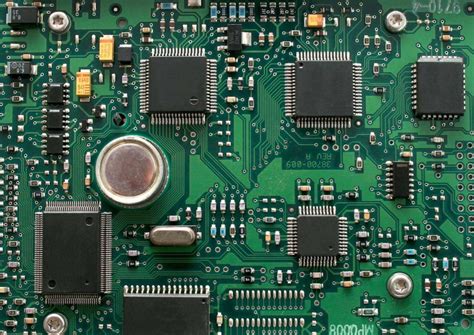
Leading European Manufacturers Of Ceramic PCBs
Ceramic printed circuit boards (PCBs) have become increasingly significant in the electronics industry due to their superior thermal conductivity, mechanical strength, and electrical insulation properties. In Europe, several leading manufacturers have emerged, setting benchmarks in the production and innovation of ceramic PCBs. These companies are at the forefront of technological advancements, catering to a wide range of industries, including automotive, aerospace, telecommunications, and medical devices.
One of the prominent players in the European market is CeramTec, a company renowned for its expertise in advanced ceramics.
With a strong focus on research and development, CeramTec has been instrumental in pushing the boundaries of ceramic PCB technology. Their products are characterized by high thermal conductivity and excellent dielectric properties, making them ideal for high-power and high-frequency applications. Furthermore, CeramTec’s commitment to sustainability and quality assurance has earned them a reputation as a reliable partner in the electronics industry.
Transitioning to another key manufacturer, Kyocera Fineceramics GmbH stands out for its innovative approach to ceramic PCB production.
As a subsidiary of the global Kyocera Corporation, the company leverages its extensive experience in ceramics to deliver cutting-edge solutions. Kyocera Fineceramics GmbH specializes in multilayer ceramic PCBs, which offer enhanced performance in complex electronic systems. Their dedication to precision engineering and customer-centric solutions has positioned them as a leader in the European market.
In addition to these giants, smaller yet highly specialized companies like ELCERAM are making significant contributions to the ceramic PCB landscape in Europe.
ELCERAM focuses on custom solutions, catering to niche markets with specific requirements. Their agility and flexibility allow them to provide tailored products that meet the unique demands of their clients. By maintaining close collaborations with research institutions and industry partners, ELCERAM continues to innovate and expand its product offerings.
Moreover, the European ceramic PCB industry benefits from a robust network of suppliers and collaborators that support the manufacturing process.
Companies such as Heraeus Electronics provide essential materials and components that enhance the performance and reliability of ceramic PCBs. Heraeus Electronics, with its extensive portfolio of thick film pastes and substrates, plays a crucial role in the supply chain, ensuring that manufacturers have access to high-quality materials.
As the demand for ceramic PCBs continues to grow, European manufacturers are investing heavily in research and development to stay ahead of the curve. This investment is not only in terms of technology but also in sustainable practices. Many companies are adopting eco-friendly manufacturing processes and materials to reduce their environmental impact. This commitment to sustainability is becoming a key differentiator in the market, as consumers and industries alike prioritize environmentally responsible products.
In conclusion, the landscape of ceramic PCB manufacturing in Europe is characterized by a blend of established leaders and innovative newcomers. Companies like CeramTec, Kyocera Fineceramics GmbH, and ELCERAM are driving the industry forward with their commitment to quality, innovation, and sustainability. Supported by a strong network of suppliers and collaborators, these manufacturers are well-positioned to meet the evolving needs of the global electronics market. As technology continues to advance, the role of ceramic PCBs in enabling high-performance, reliable electronic systems is set to become even more critical, solidifying Europe’s position as a leader in this dynamic field.
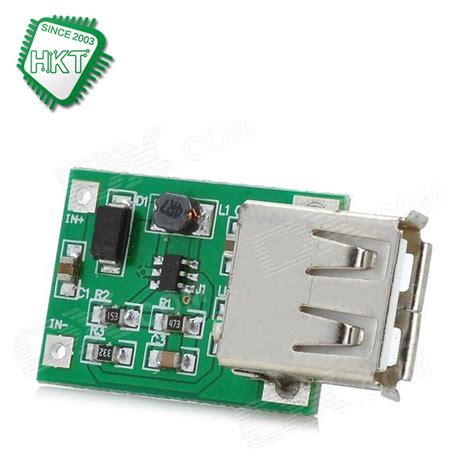
Applications Of Ceramic PCBs In European Automotive Industry
Ceramic PCBs, or printed circuit boards, have emerged as a pivotal component in the European automotive industry, offering a range of applications that enhance performance, reliability, and efficiency. As the automotive sector increasingly leans towards electrification and advanced electronic systems, the demand for robust and efficient circuit boards has surged. Ceramic PCBs, known for their superior thermal conductivity, mechanical strength, and electrical insulation properties, are ideally suited to meet these demands.
One of the primary applications of ceramic PCBs in the European automotive industry is in electric vehicles (EVs).
As Europe pushes towards a greener future, the adoption of EVs has accelerated, necessitating components that can withstand high temperatures and provide reliable performance. Ceramic PCBs are used in power electronics, such as inverters and converters, which are critical for managing the power flow between the battery and the electric motor. Their ability to dissipate heat efficiently ensures that these components operate within safe temperature ranges, thereby enhancing the overall reliability and lifespan of the vehicle.
Moreover, ceramic PCBs are integral to the development of advanced driver-assistance systems (ADAS), which are becoming standard in modern vehicles.
These systems rely on a multitude of sensors and electronic control units to function effectively. Ceramic PCBs provide the necessary thermal management and miniaturization capabilities required for these compact and complex systems. Their use in radar and LiDAR systems, for instance, ensures that these components can operate accurately and reliably under various environmental conditions, which is crucial for the safety and performance of ADAS.
In addition to EVs and ADAS, ceramic PCBs are also employed in the lighting systems of vehicles.
The shift towards LED lighting in the automotive industry has been driven by the need for energy efficiency and longevity. Ceramic PCBs are used in LED modules due to their excellent heat dissipation properties, which help maintain the performance and extend the lifespan of the LEDs. This application is particularly significant in Europe, where stringent regulations on vehicle emissions and energy consumption are in place, pushing manufacturers to adopt more sustainable technologies.
Furthermore, the integration of ceramic PCBs in automotive infotainment systems highlights their versatility.
As vehicles become more connected and feature-rich, the demand for high-performance infotainment systems has grown. Ceramic PCBs support the high-frequency operations required for these systems, ensuring seamless connectivity and enhanced user experience. Their ability to operate under high temperatures and resist environmental stressors makes them an ideal choice for the harsh conditions often encountered in automotive environments.
In conclusion, the applications of ceramic PCBs in the European automotive industry are vast and varied, driven by the need for components that offer superior performance and reliability. As the industry continues to evolve towards more electrified and technologically advanced vehicles, the role of ceramic PCBs is set to expand further. Their unique properties make them indispensable in critical automotive applications, from power electronics and ADAS to lighting and infotainment systems. As Europe continues to lead in automotive innovation, ceramic PCBs will undoubtedly play a crucial role in shaping the future of the industry, ensuring that vehicles are not only efficient and reliable but also aligned with the continent’s sustainability goals.

Environmental Impact Of Ceramic PCB Production In Europe
The production of ceramic printed circuit boards (PCBs) in Europe has seen a significant rise in recent years, driven by the increasing demand for high-performance electronic components in various industries such as automotive, aerospace, and telecommunications. While ceramic PCBs offer numerous advantages, including superior thermal management, enhanced durability, and improved electrical performance, their production process raises important environmental considerations that merit attention.
To begin with, the manufacturing of ceramic PCBs involves several stages, each with its own environmental footprint.
The initial phase of raw material extraction and processing is particularly resource-intensive. Ceramic PCBs are typically made from materials such as alumina, aluminum nitride, or beryllium oxide, which require mining and refining processes that can lead to habitat destruction, soil erosion, and water pollution. Moreover, the energy consumption associated with these processes is substantial, contributing to greenhouse gas emissions and climate change.
Transitioning to the production phase, the fabrication of ceramic PCBs involves high-temperature processes such as sintering, which further increases energy consumption
. The use of kilns and furnaces in these processes not only demands significant energy input but also results in the emission of pollutants, including volatile organic compounds (VOCs) and particulate matter. These emissions can have adverse effects on air quality, posing health risks to workers and surrounding communities.
Furthermore, the production of ceramic PCBs generates waste materials, including ceramic dust and scrap, which require careful management to prevent environmental contamination. While some of these materials can be recycled or repurposed, the recycling processes themselves can be energy-intensive and may not always be economically viable. Consequently, a portion of the waste may end up in landfills, contributing to the growing problem of electronic waste.
In response to these environmental challenges, European manufacturers are increasingly adopting sustainable practices to mitigate the impact of ceramic PCB production.
For instance, there is a growing emphasis on the use of cleaner production technologies that minimize energy consumption and reduce emissions. Innovations such as low-temperature co-fired ceramics (LTCC) are being explored to lower the energy requirements of the sintering process. Additionally, companies are investing in advanced filtration and ventilation systems to capture and treat emissions before they are released into the atmosphere.
Moreover, the European Union’s stringent environmental regulations, such as the Restriction of Hazardous Substances (RoHS) Directive and the Waste Electrical and Electronic Equipment (WEEE) Directive, are driving manufacturers to prioritize eco-friendly practices.
These regulations encourage the reduction of hazardous substances in electronic components and promote the recycling and recovery of electronic waste, thereby reducing the environmental impact of ceramic PCB production.
In conclusion, while the production of ceramic PCBs in Europe presents environmental challenges, concerted efforts are being made to address these issues through technological innovation and regulatory compliance. By continuing to prioritize sustainability, the industry can minimize its ecological footprint while meeting the growing demand for high-performance electronic components. As the sector evolves, ongoing research and development will be crucial in identifying new materials and processes that further enhance the environmental performance of ceramic PCBs, ensuring a balance between technological advancement and environmental stewardship.


